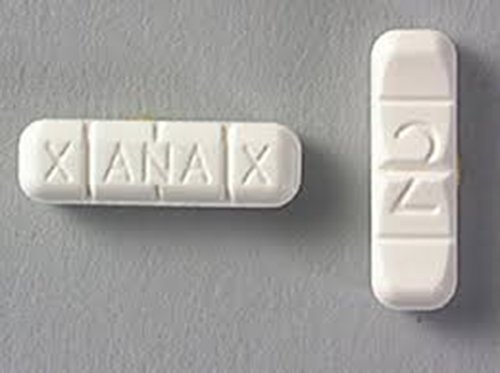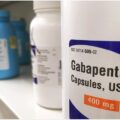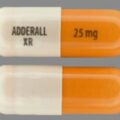Xanax is a powerful benzodiazepine that is often prescribed to treat generalized anxiety disorder (GAD), panic disorders and insomnia. It is extremely addictive when used long-term. Xanax is the number one prescribed psychiatric medication in the United States. Seventy percent of teens with a Xanax addiction get the drug from their family’s medicine cabinet. Tolerance to Xanax develops quickly, requiring the user to take more of the drug to achieve the desired effects. Someone with a Xanax addiction may take up to 20 to 30 pills per day. If the user decides to stop taking Xanax, they may experience withdrawal effects, such as anxiety, restlessness, insomnia, and tremors. The onset of withdrawal symptoms is a sign that a physical dependence has developed. The development of tolerance and withdrawal are indications of addiction.
Physical Signs Of Xanax Abuse
Physical signs of Xanax abuse are perhaps the most telling indicator that someone is abusing the drug, because these symptoms usually only occur when someone is taking more than the recommended amount of the drug. Possible physical signs of Xanax abuse can include:
- Drowsiness
- slurred speech
- headache
- dizziness
- dry mouth
- nausea
- feeling light-headed
- increased salivation
- decreased sex drive
- constipation
- lack of coordination.
It is never recommended for someone who has developed a dependence on Xanax to suddenly stop taking the medication. This can lead to severe and uncomfortable withdrawal symptoms. Symptoms of Xanax withdrawal may include: muscle pain and stiffness, changes in heart rhythm and trembling.
Psychological Signs Of Xanax Abuse
Benzodiazepines, like Xanax, can cause a range of psychological symptoms when misused. This type of drug can make it easy for individuals to forget the fine details of important conversations or tasks they need to complete. There is a distinct difference between Xanax abuse and Xanax addiction. Those who abuse Xanax at certain times, or for specific occasions, are more likely to be able to stop use at any time. Those with an addiction to Xanax are unable to control the impulse to continue to take the drug in order to maintain the “high” they get from it.
People addicted to Xanax will need the drug in order to function normally. It is also possible for someone to become convinced they cannot manage their daily lives without Xanax, which is often when abuse turns into addiction.
Although addiction to Xanax is one of the more notable psychological effects of the drug, other psychological effects may include:
- Confusion
- becoming easily annoyed
- becoming more talkative
- major changes in behavior (excessive tiredness or lack of enthusiasm)
- sudden irritability
- manic-type moods
- trouble remembering things
- avoiding tasks that require prolonged attention.
Because Xanax works by slowing brain function in the central nervous system (brain and spinal cord), individuals taking more than the recommended dose of the drug may become more inactive and apathetic than they used to be. If someone who is normally energetic and outgoing is misusing Xanax, they may appear very lethargic and apathetic to their surroundings. This can be a sign that addiction has developed. SEE: What is the Street Price of Gabapentin
Obsession With Xanax
It is possible for someone who develops a physical dependence on Xanax to become obsessed with the drug, getting more of it and increasing the amount they take. This obsession (preoccupation) tends to precede addiction. Benzodiazepines, including Xanax, are some of the most prescribed depressant medications in the U.S. today. When used in a therapeutic setting, short-acting benzodiazepines are only meant to be used for a short period of time. Often, prescribing doctors will slowly decrease the dosage amount over time, so the individual can slowly learn to operate without the drug.
When someone forms a dependency on Xanax, they are unable to control the impulse to continue to use the drug, despite potential self-harm. Typically, when Xanax is prescribed there are only a limited number of refills for the prescription, due to its habit-forming effects. So, it is possible that if someone becomes addicted to Xanax they may try to find it illicitly.
Obtaining prescription drugs like Xanax from anyone other than a medical health professional is very risky. When illicitly bought, Xanax can contain additives, such as fentanyl (which is potentially toxic), and the risks of overdose and death dramatically increase.
Polydrug Use And Xanax Addiction
Those addicted to Xanax may also take it with other substances, like alcohol. This is done in order to achieve the desired relaxing and euphoric effect, but it can be extremely dangerous and potentially fatal. When depressants such as Xanax are mixed with other central nervous system (CNS) depressants, like alcohol, the CNS becomes severely depressed. The central nervous system is the subconscious part of the body that works to regulate breathing and heart rates, and if it becomes too depressed it has the potential to stop or “forget” to function altogether.
This can result in someone struggling to breathe or stopping breathing and in a dangerously slowed heart rate. Mixing Xanax with other drugs, or taking it in larger doses than recommended, can also increase the risk of accidents, like car crashes, due to decreased response time.
Personal Loss Due To Xanax Addiction
Xanax addiction is a widely-spread problem. According to a 2011 report, 60,200 individuals who went through drug addiction treatment were addicted to benzodiazepines, like Xanax. Although addiction to Xanax can happen relatively quickly, sometimes it can be difficult to recognize due to its subtle signs. This can cause varying degrees of personal loss. When someone becomes addicted, the addictive substance hijacks the reward system of their brain and causes them to compulsively seek out and use more of that substance. SEE: What is the Street Price of Adderall?
This happens because each time someone misuses a drug like Xanax that causes relaxation and euphoria, the brain associates using the drug with a positive outcome. Once a physical dependence on the drug is formed, the brain has become so used to operating with the drug in its system that it becomes increasingly difficult for it to operate without it. If someone is addicted to Xanax, they may exhibit the following: trouble maintaining personal relationships, difficulties following through on social or work commitments and possibly financial issues.
Xanax Street price
Once a Xanax addiction has taken hold, daily responsibilities, such as school, work or family, are ignored as energy is redirected towards drug seeking behavior. Illegal prescription supplies are the primary source of drugs for benzodiazepine abusers. These patients are doctor shoppers and often change pharmacies. They visit emergency rooms frequently and may feign symptoms to obtain benzodiazepine prescriptions. They fill prescriptions for personal use or sell the drugs to illicit sources to support their addictions. On the street, brand-name benzodiazepines such as Xanax are worth much more than generics because they can be identified by photographs of brand-name benzodiazepines on the Internet or in reference books. In many cities, the general street value of the Xanax may be $5 to $10 per pill. The street value of Xanax 0.5 mg ranges, from $3-5, while 1mg Xanax is sold for around $5.50. In most countries, when it comes to the penalties for prescription drug possession and sales, unlawful possession or sale of prescription drugs is punished at the same level of severity as scheduled drugs like heroin, ecstasy, and cocaine. READ: How To Spot Fake Pressed Xanax bars





